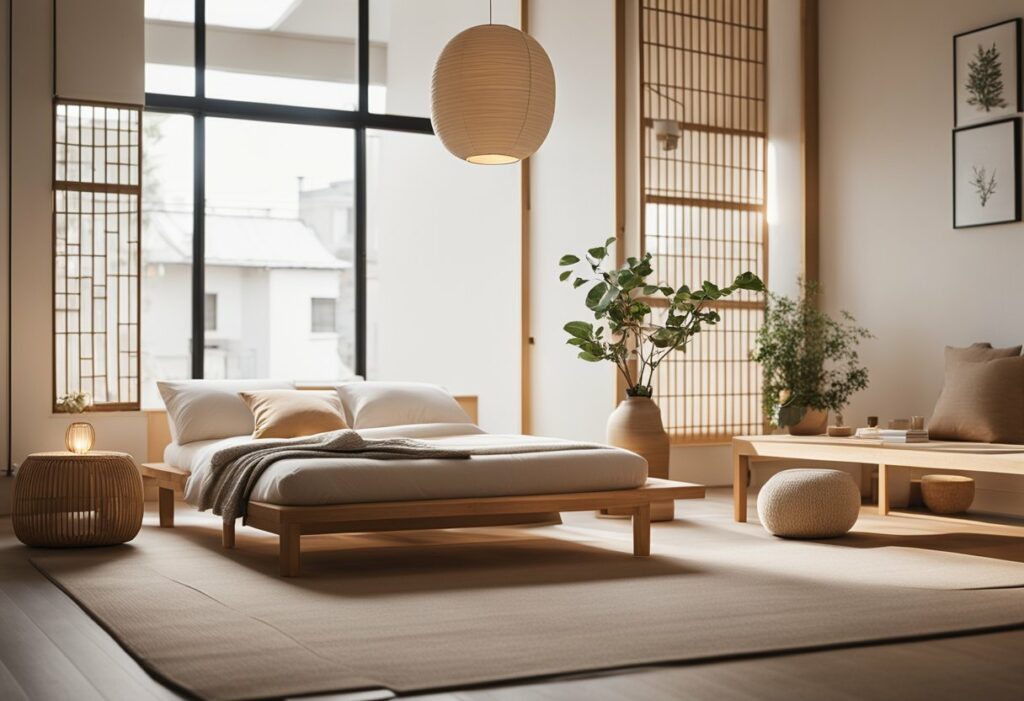Japanese Scandinavian Interior Design: The Perfect Fusion of Minimalism and Functionality
Japandi interior design is a captivating fusion of Japanese and Scandinavian styles, combining the best of both worlds. This design concept is characterised by its minimalistic and functional approach, emphasising simplicity, natural elements, and a sense of tranquillity. It’s a perfect choice for creating a serene and uncluttered home environment, where clean lines, neutral colours, and sustainable materials take centre stage.
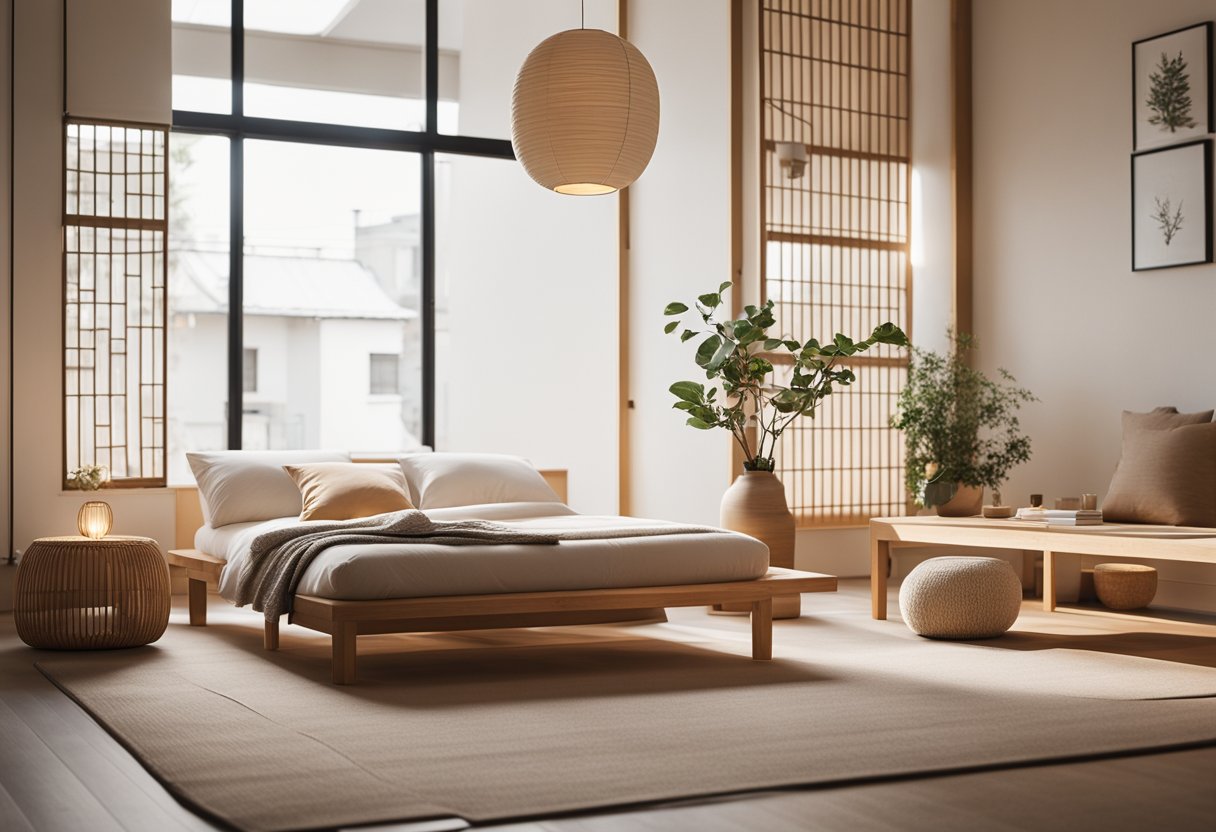
When incorporating Japandi in your space, you’ll find that it brings a sense of harmony and balance, creating a peaceful and unobtrusive atmosphere. By blending Japanese and Scandinavian aesthetics, you can achieve a timeless and elegant interior that exudes warmth and comfort. The fusion of these two design philosophies allows for a seamless integration of modern functionality and traditional craftsmanship, resulting in a space that feels both contemporary and deeply rooted in nature.
Key Takeways
- Japandi interior design combines Japanese and Scandinavian styles for a minimalistic and tranquil home environment.
- The fusion of Japanese and Scandinavian aesthetics offers a timeless and elegant interior with a focus on simplicity and natural elements.
- Incorporating Japandi in your space creates a harmonious and balanced atmosphere, blending modern functionality with traditional craftsmanship.
Fundamentals of Japandi Interior Design
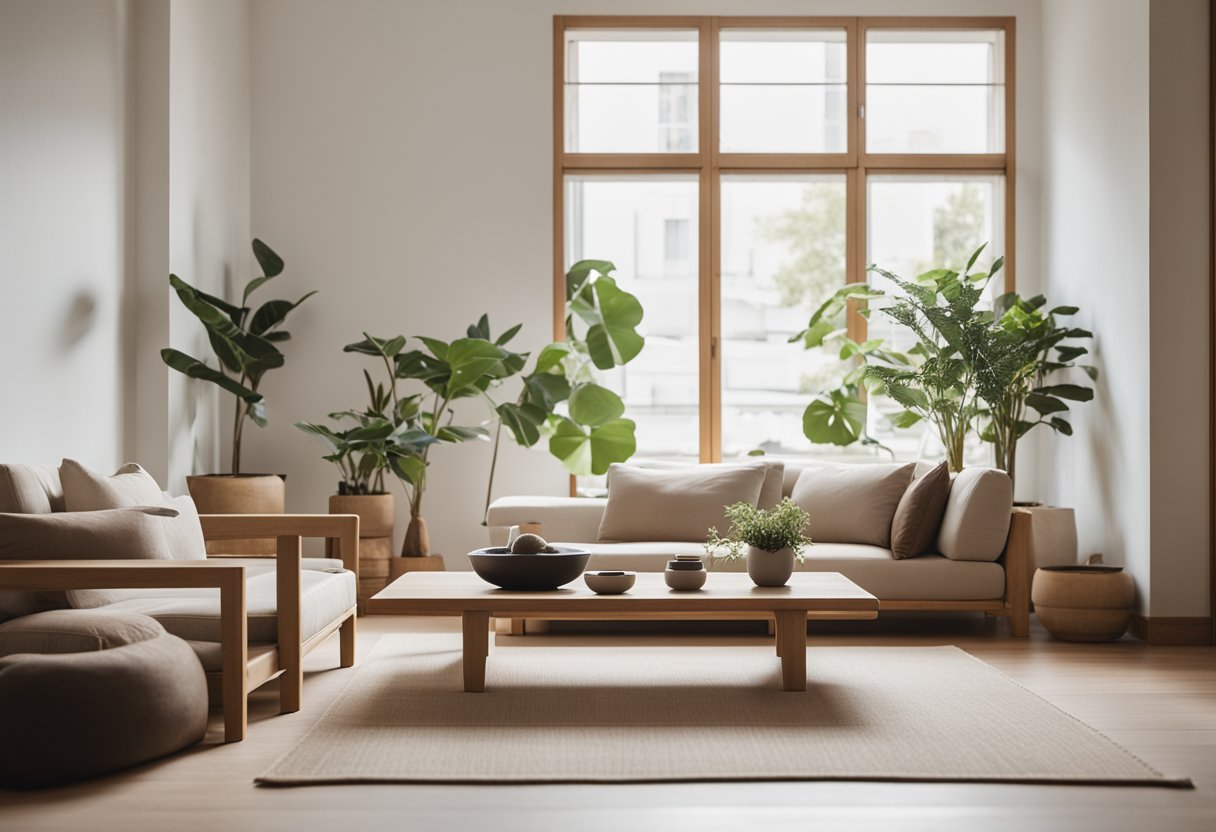
If you’re looking for a minimalist and functional design style that blends natural elements and clean lines, Japandi interior design might be just what you need. This design philosophy is a fusion of Japanese and Scandinavian styles, making for a unique aesthetic that is both warm and serene.
Defining Japandi Aesthetic
Japandi style is all about balance and harmony, combining the best of both Japanese and Scandinavian design philosophies. The result is a minimalist and natural aesthetic that is both timeless and cozy. The neutral colour palette is accented with black, with soft textures and tactile materials like wool, linen, and ceramics.
Influence of Culture and Geography
The fusion of Japanese and Scandinavian design is not a coincidence. Both cultures have a deep connection to nature and a love for simplicity and quality craftsmanship. The Japanese aesthetic of wabi-sabi, which embraces imperfection and the beauty of the imperfect, is also prevalent in Japandi design.
Principles of Minimalism and Functionality
At the core of Japandi design is minimalism and functionality. The use of natural materials like wood, stone, and bamboo is prominent, as is the focus on clean lines and functional interiors. Storage is also a key consideration in Japandi design, with a focus on order and eco-friendliness.
Overall, Japandi interior design is a perfect blend of Japanese minimalism and Scandinavian functionality. The result is a warm and inviting sanctuary that connects you to nature and promotes tranquility and serenity.
Incorporating Japandi in Your Space
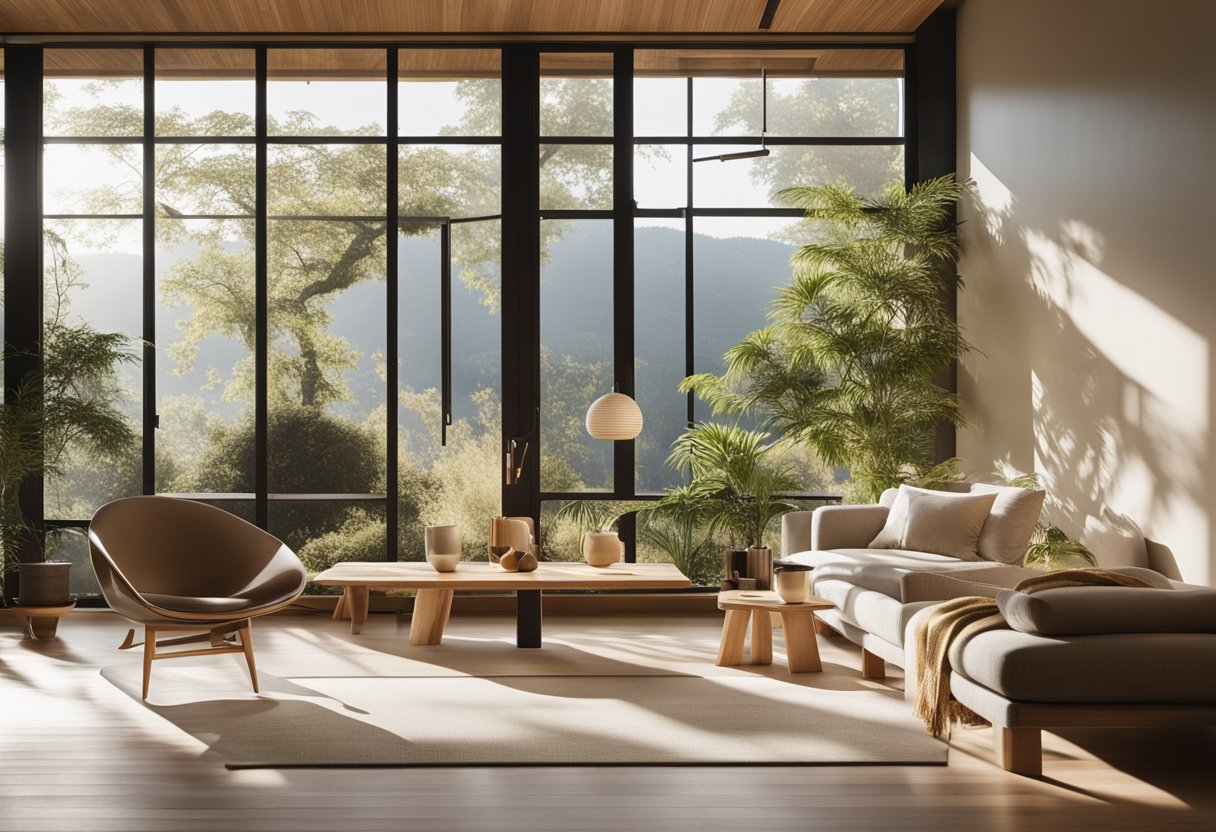
If you’re looking to bring a sense of tranquility, balance, and coziness to your space, Japandi style might be just what you need. This fusion of Japanese and Scandinavian design principles is all about simplicity, natural materials, and quality craftsmanship. Here are some tips for incorporating Japandi in your space:
Selecting the Right Materials and Textures
Japandi style is all about natural materials, such as wood, stone, bamboo, and linen. These materials add warmth and texture to your space, making it feel more inviting and cozy. Tactile materials like rattan and ceramics can also add an earthy aesthetic to your space. Washi paper, a traditional Japanese paper made from mulberry, can be used to create beautiful and unique textures on walls and furniture.
Furniture and Decor Choices for Japandi
When it comes to furniture and decor, Japandi style is all about simplicity and quality craftsmanship. Look for pieces that are handmade and have clean lines. Menu, a Danish design company, and Karimoku Case Study, a Japanese furniture brand, are great examples of companies that embrace Japandi style. When it comes to decor, incorporate plants and greenery to bring a sense of nature indoors. Soft textures like wool and stoneware ceramics can also add warmth and texture to your space.
Creating Harmony with Color and Light
Neutral colors like ash, beige, and grey are key to creating a balanced Japandi aesthetic. Black accents can be used sparingly to create contrast and add depth to your space. Natural light is also important in Japandi style, so make sure to keep your windows unobstructed and let in as much light as possible. Use warm lighting fixtures to create a cozy and inviting atmosphere.
Incorporating Japandi in your space is all about creating a sense of harmony and tranquility. By embracing natural materials, quality craftsmanship, and a neutral color palette, you can create a space that feels warm, inviting, and peaceful. Whether you’re in Tokyo, Copenhagen, or London, Japandi style is a great way to bring a sense of calm to your home.
Frequently Asked Questions
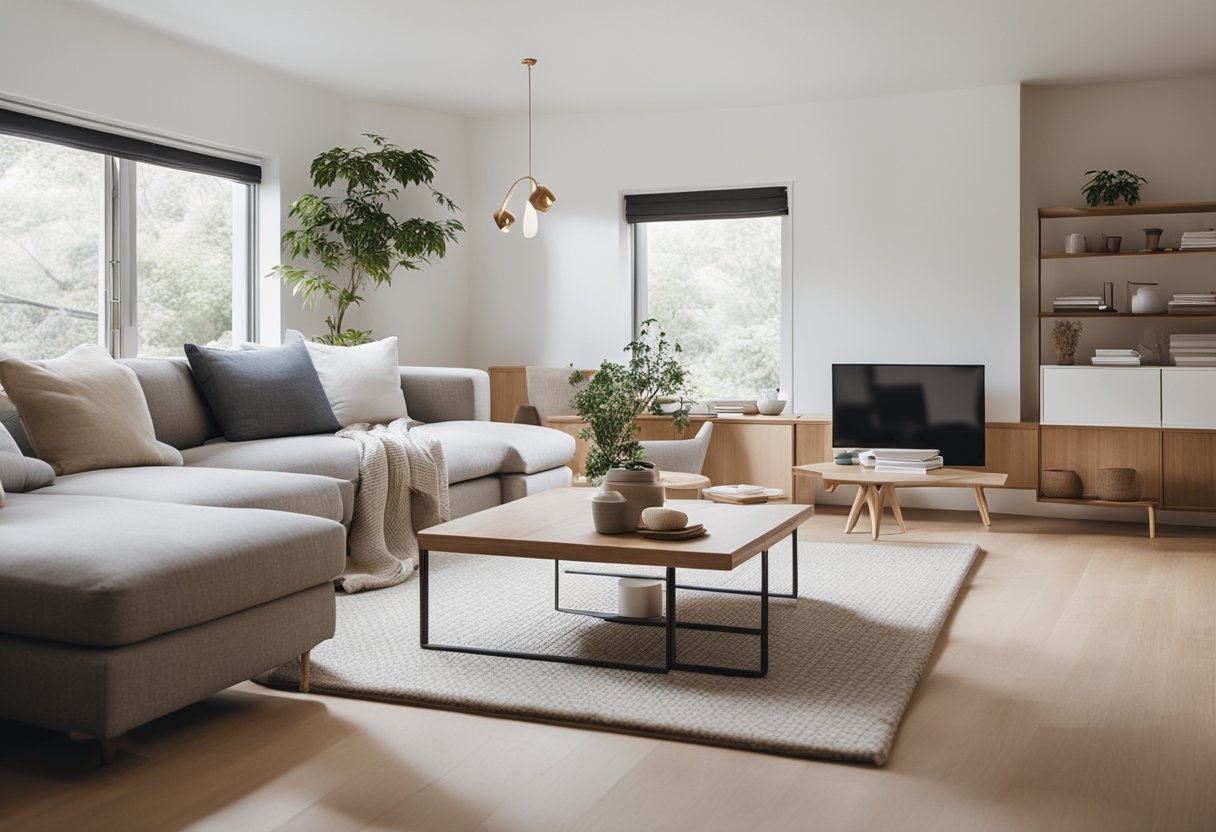
How can I fuse the minimalism of Japan with the cosy comfort of Scandinavian design in my living room?
To fuse the minimalism of Japan with the cosy comfort of Scandinavian design in your living room, you need to focus on simplicity, functionality, and natural materials. Use a neutral colour palette, such as white, beige, or grey, and incorporate warm, natural materials such as wood, wool, and linen. You can also add some greenery, such as a bonsai tree or a potted plant, to bring some life into the space. Additionally, you can add some soft lighting to create a warm and inviting atmosphere.
What are the defining characteristics of a bedroom designed in the Japandi style?
A bedroom designed in the Japandi style is typically minimalist, functional, and serene. It features a simple and uncluttered layout, with natural materials such as wood, linen, and cotton. The colour palette is neutral, with whites, greys, and beige being the predominant colours. Furniture is typically low to the ground, with clean lines and simple designs.
Could you highlight the key elements that make Japandi furniture stand out?
Japandi furniture is typically characterised by its minimalist design, clean lines, and use of natural materials. It features a blend of Japanese and Scandinavian design elements, such as the use of wood, natural fibres, and neutral colours. Furniture is typically low to the ground, with simple and functional designs that focus on form and function.
In what ways does modern Japanese interior design influence the Japandi aesthetic?
Modern Japanese interior design has a strong influence on the Japandi aesthetic, particularly in terms of its minimalism, functionality, and use of natural materials. Japanese design also places a strong emphasis on the concept of “wabi-sabi”, which is the appreciation of imperfection and impermanence. This is reflected in the Japandi style through the use of natural materials and the celebration of simplicity.
What’s the secret to achieving that perfect blend of Japanese and Scandinavian styles on a budget, perhaps using IKEA products?
The secret to achieving the perfect blend of Japanese and Scandinavian styles on a budget is to focus on simplicity, functionality, and natural materials. Look for furniture and accessories that have clean lines, simple designs, and are made from natural materials such as wood and linen. IKEA is a great place to start, as they offer a wide range of affordable furniture and accessories that fit the Japandi aesthetic.
How does the Japandi style differ from the simplicity and functional approach of Muji interiors?
While both Japandi and Muji interiors share a focus on simplicity and functionality, the Japandi style is characterised by a warmer, more inviting aesthetic. Japandi interiors incorporate natural materials, warm colours, and soft lighting to create a cosy and inviting atmosphere, while Muji interiors tend to be more minimalist and utilitarian in their approach.

